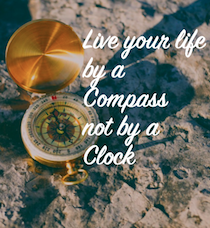Night Navigation

Night Navigation
Dom gave another great talk on Tues leading us through night navigation. Great feedback and clearly an appetite for us to continue the series of talks into June.
Why should you come to tonight’s talk (Thurs 28th May)?
Check out just some of the feedback from Tues:
- “This has been a very informative and interesting set of sessions. Thank you very much, well done, stay safe”
- “The talks have been brilliant, thank you, would love them to continue”
- “thanks guys very well presented as usual”
- “Thank you both very much Very informative sessions and an introduction to the boating world!!”
- “Thank you so much – been most informative, really appreciate all the time and effort that has gone into the presentations x”
- “cheers guys as all ways brilliant”
Introduction:
We started by talking about being prepared. How and why it is challenging at night and the level of experience suggested. We looked at suggestions for extra kit to carry at night. These included lights, head torches, flares, luminescent compasses and using radar if appropriate. Dom demonstrated how the lights on lifejackets activate upon contact with water. Also the important of having lights fitted. He also reminded us to adjust the backlight on equipment such as VHF radios (and remember to adjust it again before daylight). Adjusting backlight is something we look at on our VHF courses.
Lights on Boats:
As this was an introduction to light it was impossible within the time frame to cover all possibilities, but Dom explained the difference on lights on the most commonly encountered vessels. Not only do we need to know which boats we need on our boats but we need to be able to recognise the vessels we may encounter at sea.
We looked at:
- whether lights suggested a boat was power or sail,
- how large it was,
- which aspect or side of the boat we were seeing and
- what the boat was doing – at anchor, under way, making way, towing etc.
He then threw an unexpected quiz at us!! Putting light sequences up on screen and getting us to comment in the chat box if we could recognise the lights. Sadly there were no prizes but a great exercise. He went on to explain the level of details expected at different levels of qualifications and experience.
Lights on Navigation Marks:
Next up were navigation marks. We considered what information we would have in advance to help aid out pilotage and what we would expect to see out on the water by using a chart. How do we tell if they are lit or not on a chart, how the chart manufacturers differ in the symbols used and what the abbreviations mean.
In Poole we looked at the light sequences on the lateral or channel marks. The differences in the light sequences helping us identify exactly where we are in relation to the Channel. In Poole we have a variety of different sequences used – some are quick flashing others flashing 3 times in every 5 sec etc.
And then we moved onto look at what these sequences actually mean. A useful guide is given in this link from the RYA Buoys and Buoyage
Cardinal marks were next. These are very important identifying where the safest water is and we chatted about the similarity to a clock face for light sequences.
E is 3 flashes, S is 6+1lg W is 9 and N is continuous flashing approximately once every sec.
We moved on to look at Isolated Danger, Special Marks, Fairway Marks and Temporary Wreck Markers.
Fixed lights and transits were also discussed and then onto sector lights. Dom showed us illustrations of how marina entrances might look night and day with fixed lights. He also discussed how the sector lights worked at the entrance to Beaulieu River
We looked at how we could use the information gained from the chart for pilotage to navigate a safe route the harbour.
Safety Considerations:
We concluded by discussing when it is appropriate to go out in the dark and how to gain experience safely. Dom recommends all his Day Skipper & Yachtmaster Students sit on land in the harbour one evening and look out to see what they can spot be that buoyage or ships moving around. We talked about the limitations of colour blindness and how to provide solutions and chatted about lights that may be damaged. The issue of car lights on land, lights on the docks, traffic lights etc can all add to the general confusion at night and also how distance and speed perception is altered at night. We finished up by chatting about firework nights locally and the extra hazards that occur during those evenings
Next steps:
Another great talk by Dom – we do not recommend you rush out without appropriate training or experience but hopefully the talk acted as an insight into the factors we consider. If you want to learn more we cover lights on our Day Skipper & Yachtmaster Courses (currently live via Zoom) and for practical experience we run bespoke training in an evening. Night Nav is included in our Day Skipper Practical and Advanced Powerboat Courses as well. These are curtailed by the current situation but we will be looking to get these started again as soon as the Covid situation permits. We are also happy to rerun this presentation live with questions for individuals, groups or families at modest cost – contact us for details.
A fabulous resource is the electronic version of the IRPCS Book For this particular book we highly recommend the ebook version as it allows you to view vessels in different light scenarios. Just check before purchase that you are buying it in your preferred choice. Some prefer to use the RYA Books app others download directly through app store.











